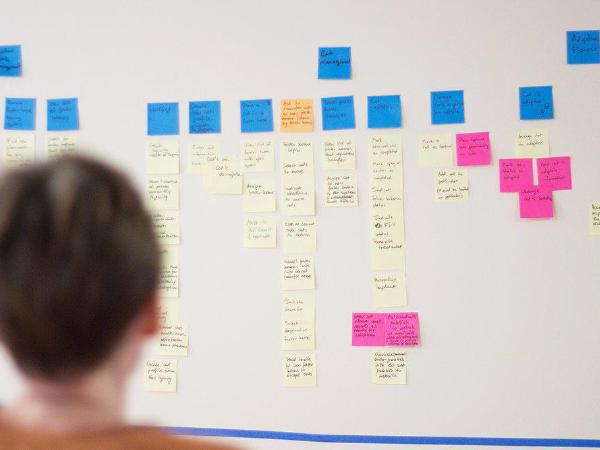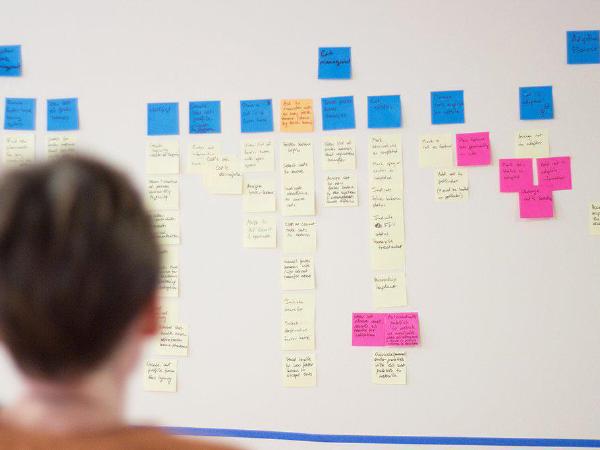Web Development for Business Users
2018

Prioritizing Defects
A defect, or bug, in a software product can be defined as a flaw in the system that leads to a measurable or observable deviation from its expected result. During development, it’s part of the quality assurance process to prioritize defects in order to minimize the impact to the end product and meet the agreed-upon quality level for the product. This prioritization can seem like a dark art. How do we decide what gets addressed and what doesn’t?

Agile for Stakeholders
In Agile development, a stakeholder is anyone outside the development team with a stake in the success of the project. If you are a stakeholder, knowledge of Agile will help you understand how the project will be developed and managed, when you can expect to see progress, and what the team needs from you in order to deliver their best work. Understanding these basic concepts and what your role entails are essential to your project’s success.

What is Software Quality Assurance?
A crucial but often overlooked aspect of software development is quality assurance (QA). If you have an app in progress, you will likely hear this term throughout the development life cycle. It may seem that coding is the brunt of the development work, since without code your app doesn’t exist, but quality assurance efforts often consist of up to 50% of the total project effort (1) (and part of the QA effort is coding). Without quality assurance, your app may exist but it is unlikely it will function well, meet the objectives of your users, or be maintainable in the future. QA is important, but what exactly is it?

Managing Sprint Reviews for Multiple Clients or Projects
Sprint reviews for teams working with multiple clients and managing multiple projects can be a challenge. At Caktus, we combine more traditional sprint review guidelines with some tweaks to fit our company and client’s needs.

Add Value To Your Django Project With An API
How do your users interact with your web app? Do you have users who are requesting new features? Are there more good feature requests than you have developer hours to build? Often, a small addition to your app can open the door to let users build features they want (within limits) without using more of your own developers’ time, and you can still keep control over how data can be accessed or changed. That small addition is called an application programming interface, or API. APIs are used across the web, but if you aren’t a developer, you may not have heard of them. They can be easily built on top of Django projects, though, and can provide great value to your own developers as well as to your users.

UX Research Methods 3: Evaluating What Is
In previous blog posts on UX research methods, I discussed techniques we use to understand how users think and feel, what they need and want, and why; and those we use to analyze and understand user behavior.
2017

Caktus Discovery Workshops
Before an app can be built, the development team needs to know what they are supposed to be building. How do they establish that? With requirements gathering.

Getting Started with Outsourced Web Development
In researching outsourced web development, you may have come across a few different ways to get your project built and have some questions as a result. How well defined do the project requirements need to be prior to starting development? Will Waterfall or Agile methods deliver the best results? Should you look for a consultancy offering team augmentation or in-house Agile-based work? What are the ramifications for your project of picking one or the other?

From User Story Mapping to High-Level Release Plan
At Caktus, we begin many projects with a discovery workshop. A discovery workshop is an opportunity for our product team to get together with client stakeholders in order to answer three questions:

Is Django the Right Fit for your Project?
You need a website. You may have done some searches, and come back overwhelmed and empty-handed, having found hosting providers offering services that may have sounded familiar (“WordPress”) and ones that may have sounded like a foreign language (“cPanel”). You may have considered hiring someone to build your website, and gotten conflicting answers about what you need and what it would cost. You may have also heard about Django, but you’re not sure how it it fits into the picture and whether or not it’s the right fit for your project. This is common, because there are many different types of websites out there. To help answer the question of whether Django is the right fit for your project, let’s take a look at the landscape.